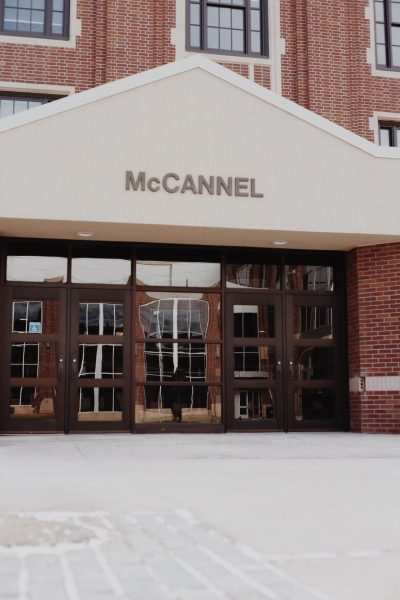History of the politics of trade in America
This past weekend I finished reading James McPherson’s Civil War tome “Battle Cry of Freedom.” I highly recommend the Pulitzer Prize winning book to any American history aficionado, although I confess the length of the book took me several months to get through.
Amidst the descriptions of battles, tactics, industry and slavery was an in-depth description of the politics before and during the Civil War. The political struggles of the time were deeply intertwined with everything happening throughout the country, a fact that can be overlooked in many students’ study of Civil War history, which seems to be limited mainly to memorizing the names of battles in a high school classroom.
The one issue specifically I would like to focus on is the debate over tariffs in the Civil War. Tariffs are essentially a tax levied on imports coming into the country, and prior to the Civil War – and for the next half-century or so after – were the main method of raising revenue to finance the Federal government.
According to government data, tariffs averaged 15 percent and financed approximately 95 percent of the federal budget 1860; in 2010 these figures were 1.2 percent and 1.3 percent respectively. In 1860 there was no federal income tax – although one was implemented in the North to finance the Civil War- but in 2010, payroll and income taxes accounted for close to 60 percent of Federal revenues.
The relative diminishing size and importance of tariff revenue is due to the advent of free trade agreements, which have lowered tariffs and expanded trade between countries. Additionally, the growth in the size of government has made the ability to fund it entirely through tariffs next to impossible.
Of course, there is more to tariffs than just their ability to raise money; they were and are still seen as a way to protect domestic businesses and workers from foreign competitors. Tariffs that were implemented after the American Revolution allowed for certain manufacturers to grow despite having to compete against more productive European companies. This made them popular, especially at a time when using excessive taxes to generate revenue for the government would have politically impossible.
The politics of tariffs during the Civil War were slightly more complicated and regional than they are today. For the most part, southern plantation owners opposed tariffs while industrialists in the North supported them. While not considered by historians to be a main cause of the Civil War, the debate over tariffs certainly led to discord prior to the war.
Fortunately, the dumpster fire that is the 2016 presidential race is not nearly as contentious as the runup to the Civil War. However, trade has played a prominent role in what passes for modern public discourse, with both Hillary Clinton and Donald Trump generally opposing new free trade agreements. Trump has specifically called for tariffs on China and Mexico, promising to bring jobs back to the United States. The idea of using tariffs for government revenue has been discarded almost entirely, with the debate now focused on trade’s effect on jobs.
In some respects, it is not surprising that railing against free trade has brought political support. While most economists support the lowering of tariffs and trade barriers as mutually beneficial for the parties involved, the negative aspects of free trade are starkly visible – a factory closes because it can’t compete against cheap imports from China, for example – while the positive qualities are harder for the average person to discern – lower prices for consumers and increased growth in different sectors of the economy.
While there are clearly benefits from increased trade, it is apparent that a large number of Americans either don’t believe trade is actually a good thing, or they think perhaps that the benefits are just going to a select group of people. Being able to save a couple bucks on cheaper imports and the promise of potentially getting a new job isn’t much comfort to a laid off worker who has to take a job making noticeably less money.
The ability to train and educate a workforce that can respond to the changes trade brings to the labor market is a fundamental challenge of globalization (and for that matter increased automation as well). Adopting policies that encourage free trade while at the same time developing a superior education system and social insurance framework will allow the country to both reap the benefits of trade while mitigating the downsides.
Our current programs for assisting workers who lose their jobs due to trade are expensive, have low placement rates and do little to boost wages relative to the worker’s previous employment. NPR reported earlier this month that one out of every six working age males is out of the labor force. We clearly have room for improvement.
While trade and tariffs have been cast as a populist issue throughout American history, pitting workers against business, I don’t think this necessarily needs to be the case. Americans of all economic statuses should be able to benefit from trade as consumers, workers and entrepreneurs, but this will require policy changes that reach further than simply how high trade barriers are on certain goods with certain countries. Being pro-trade shouldn’t make one an “elitist.”
America can’t just shut itself off from the world, but we also need to understand that some people will be adversely affected by increased trade with foreign countries. Many manufacturing jobs will never come back, despite what you might hear on the campaign trail; technology has displaced many workers permanently. But just as has happened throughout human history, jobs will change and workers will adjust. We need to make sure we have a system in place that is conducive to supporting this process.
Some issues will be perpetual sources of debate in American politics; trade is one of them. While some of the details have changed, many of the broad strokes remain the same. Trade with other countries should be seen as an opportunity for economic growth and efficiency, but this opportunity needs to be handled judiciously in order to be both popular amongst the public and fair for the average American.
Sean Cleary is a copy editor for The Dakota Student. He can be reached at [email protected]












